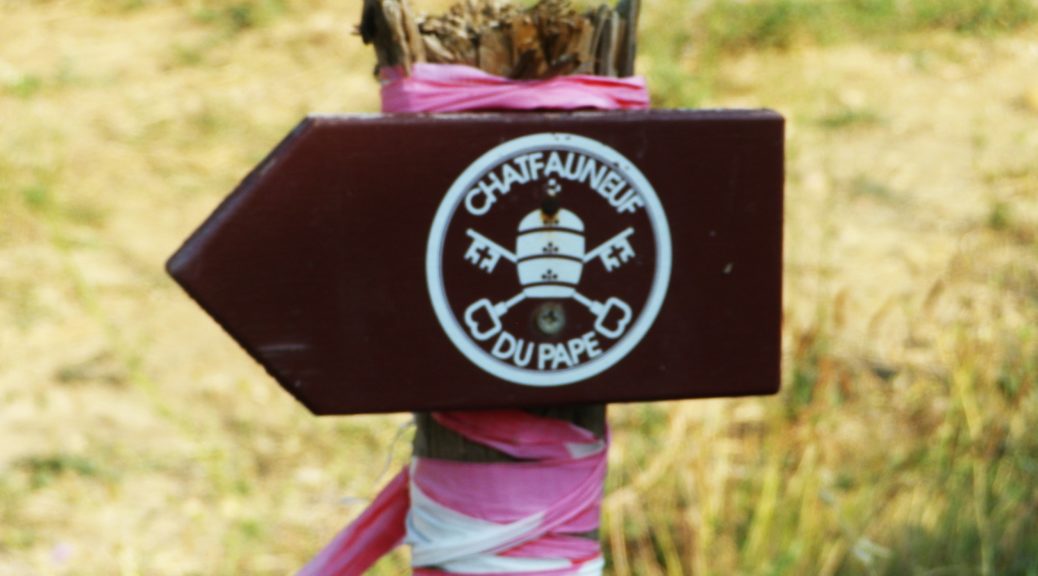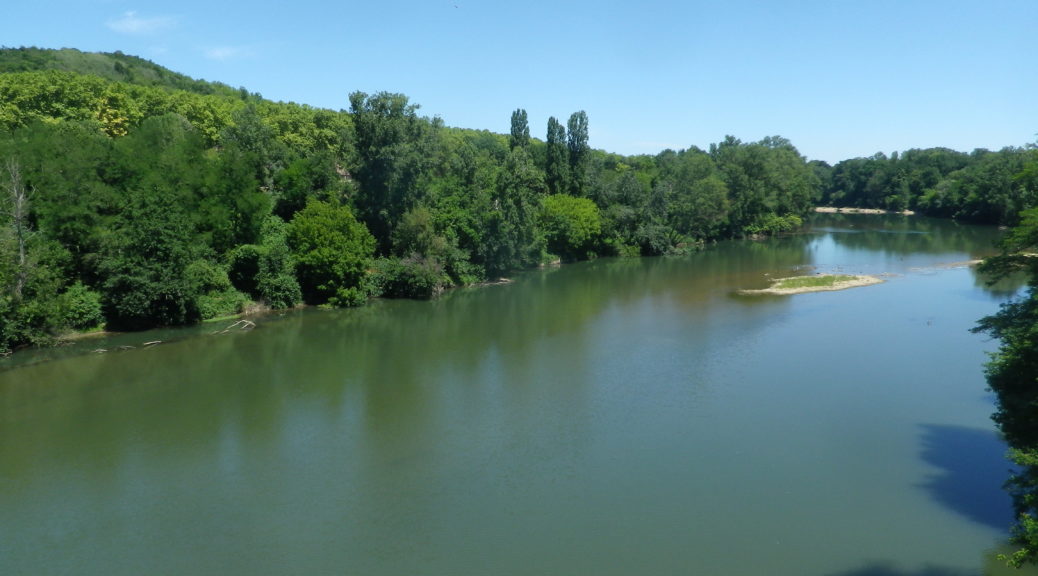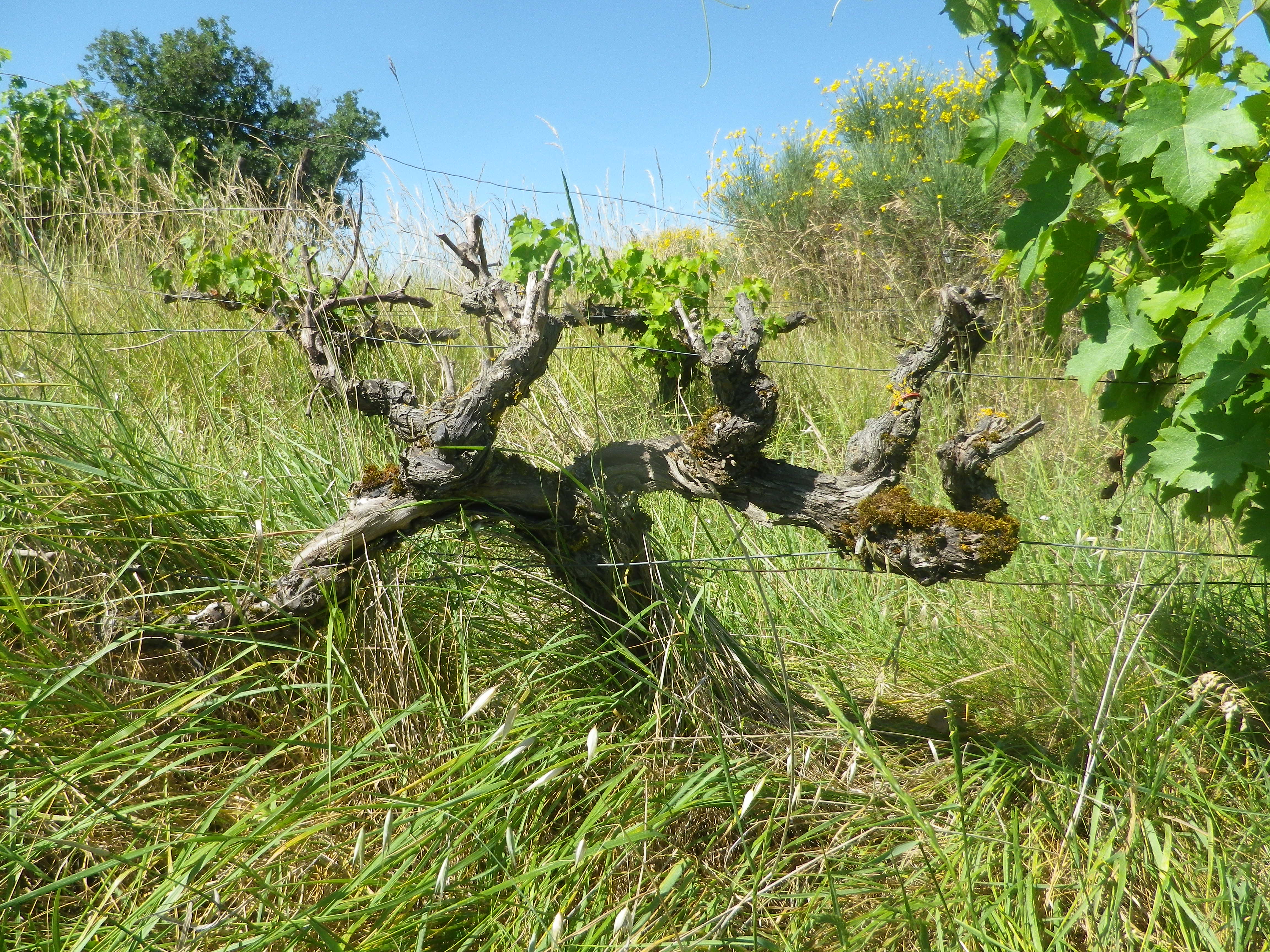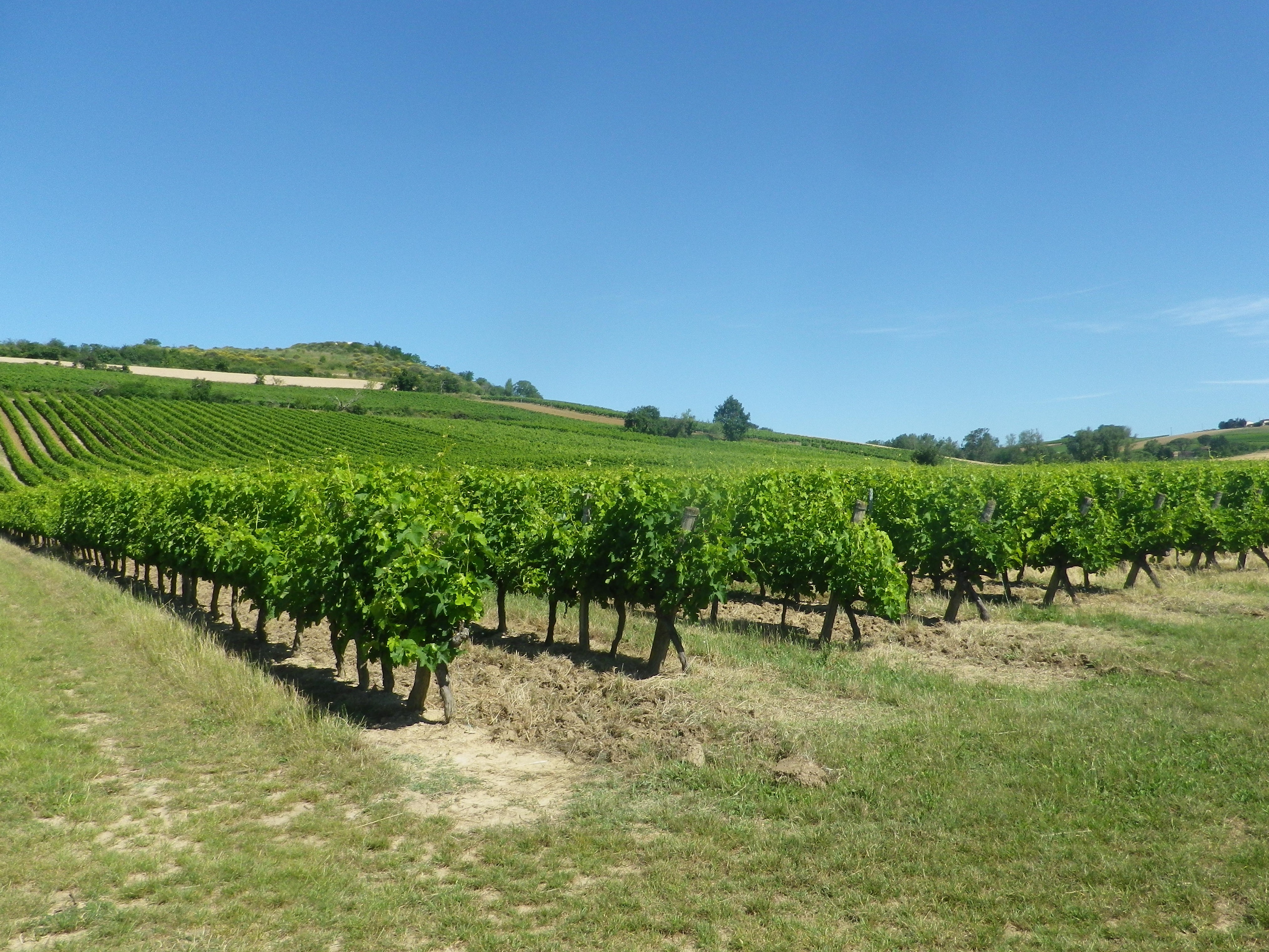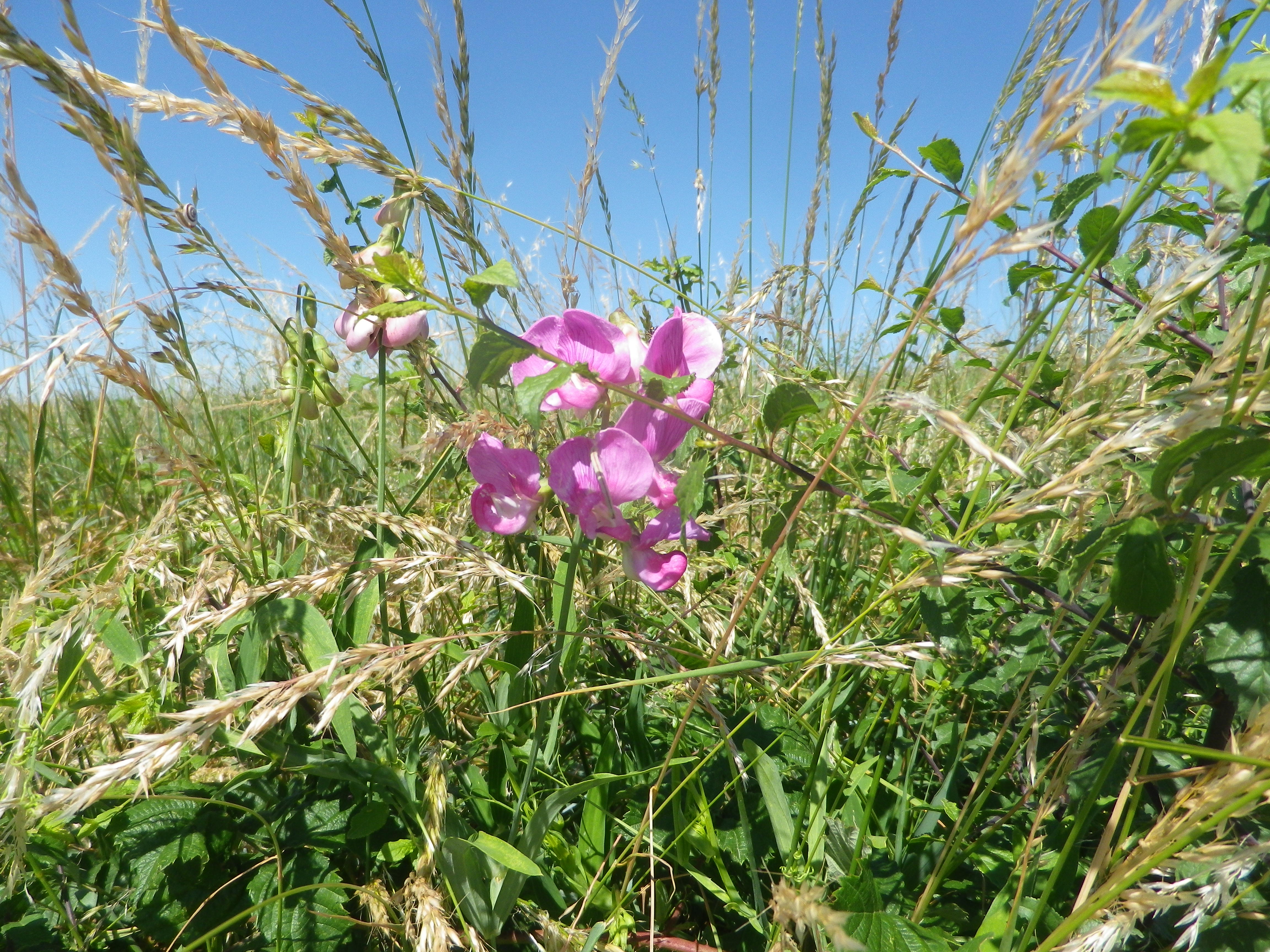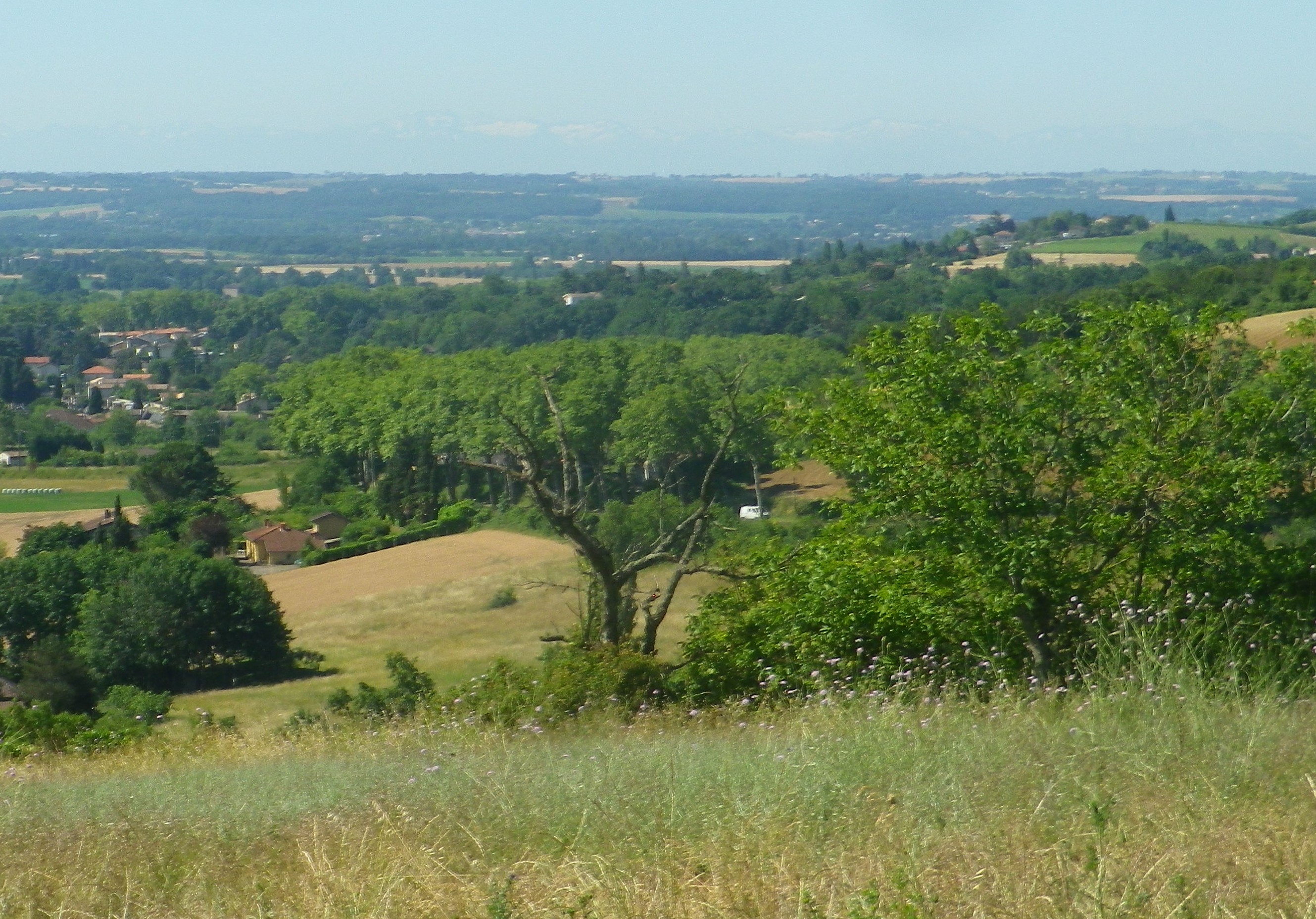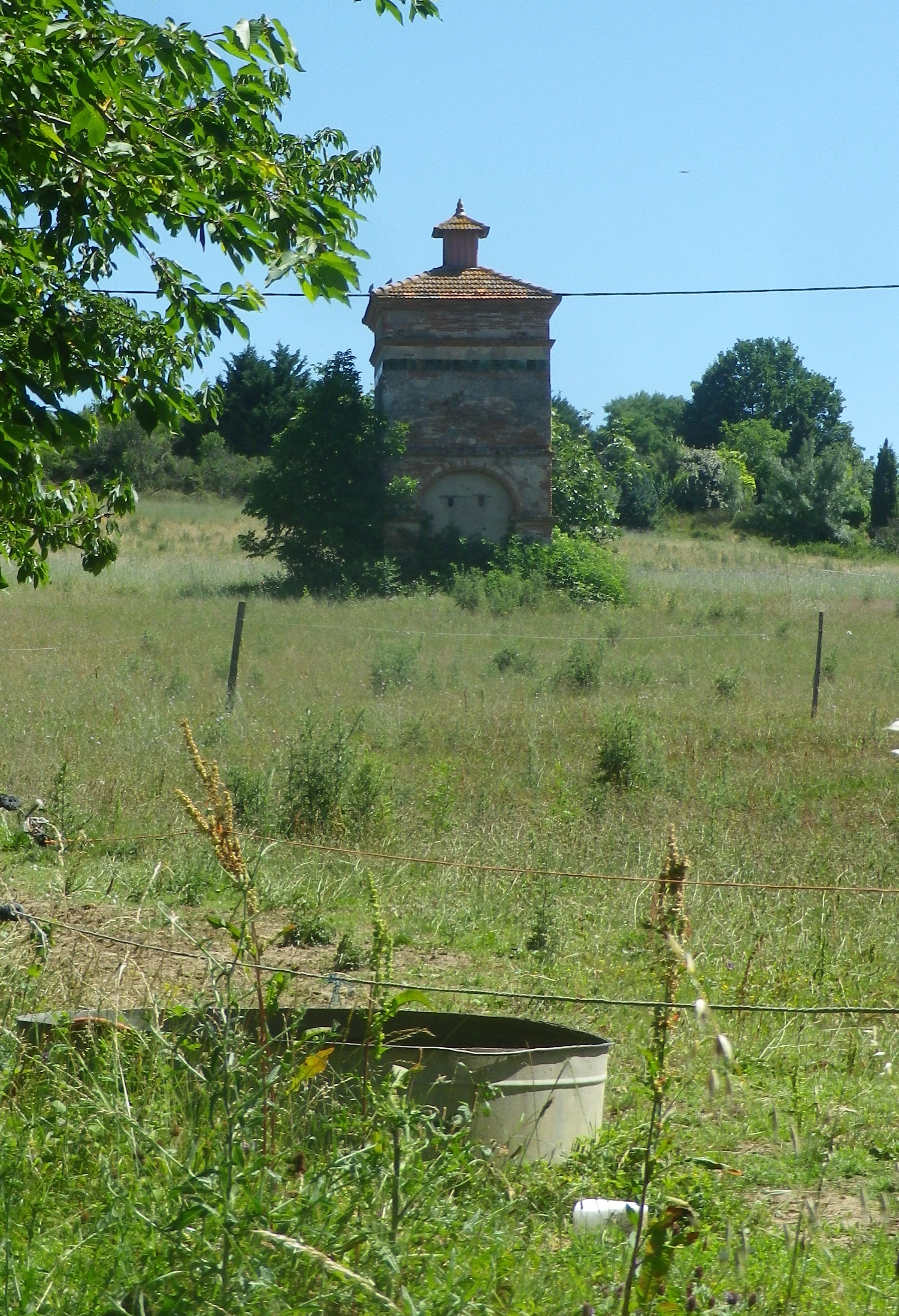Trail Name: Escapade au Coeur du Vignoble de Chateauneuf du Pape
Trail Type: an easy short distance circuit; well-maintained and almost about half paved, and half rough, trail surface; marking on the trail is ok, but take a map.
Length:
Total – 7.5 kilometers/4.6 miles
Convenient to:
Avignon or Orange, France
Marking:
Small maroon colored square with the Chateauneuf coat of arms (occasionally), and (15) education boards
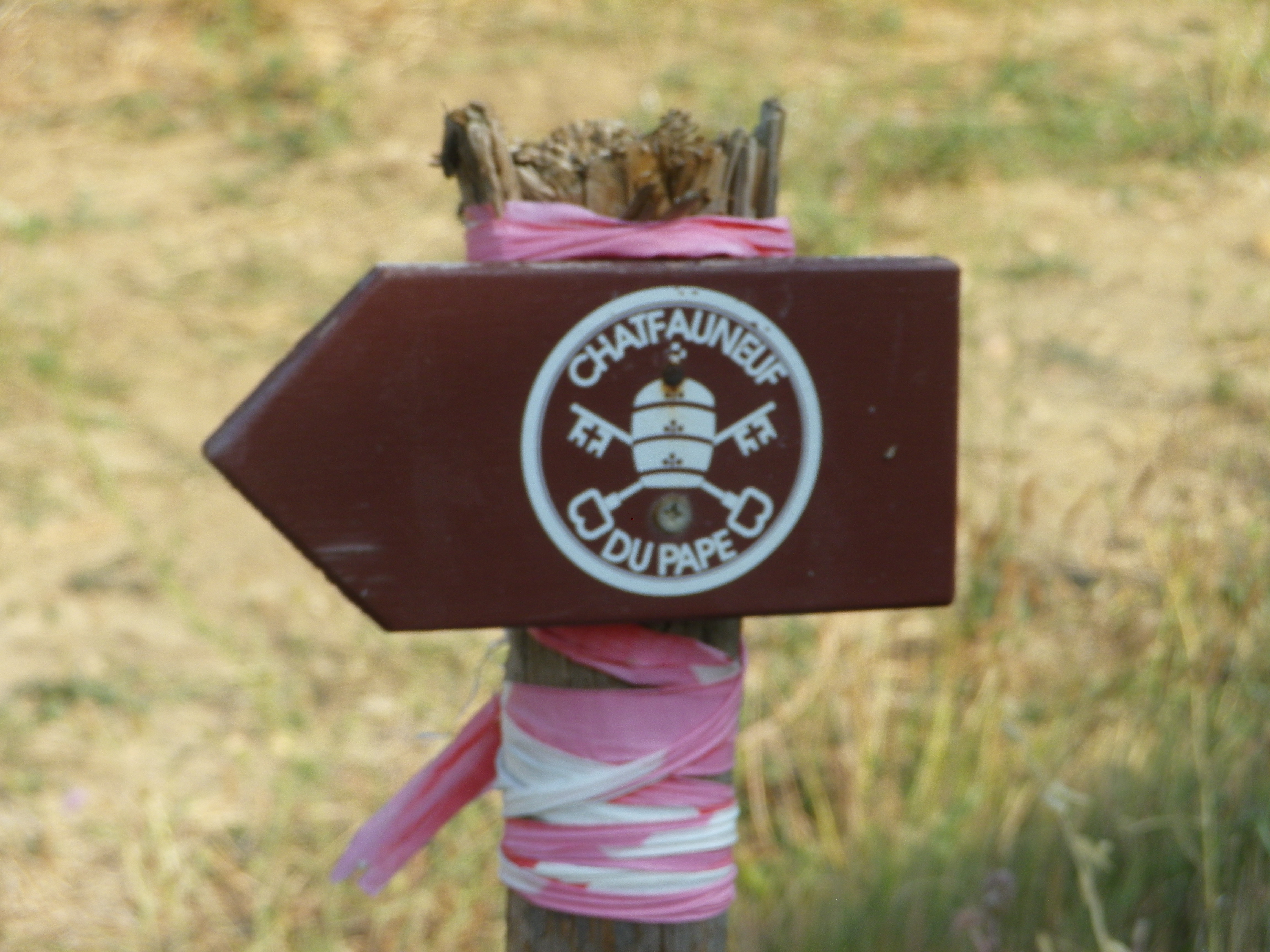
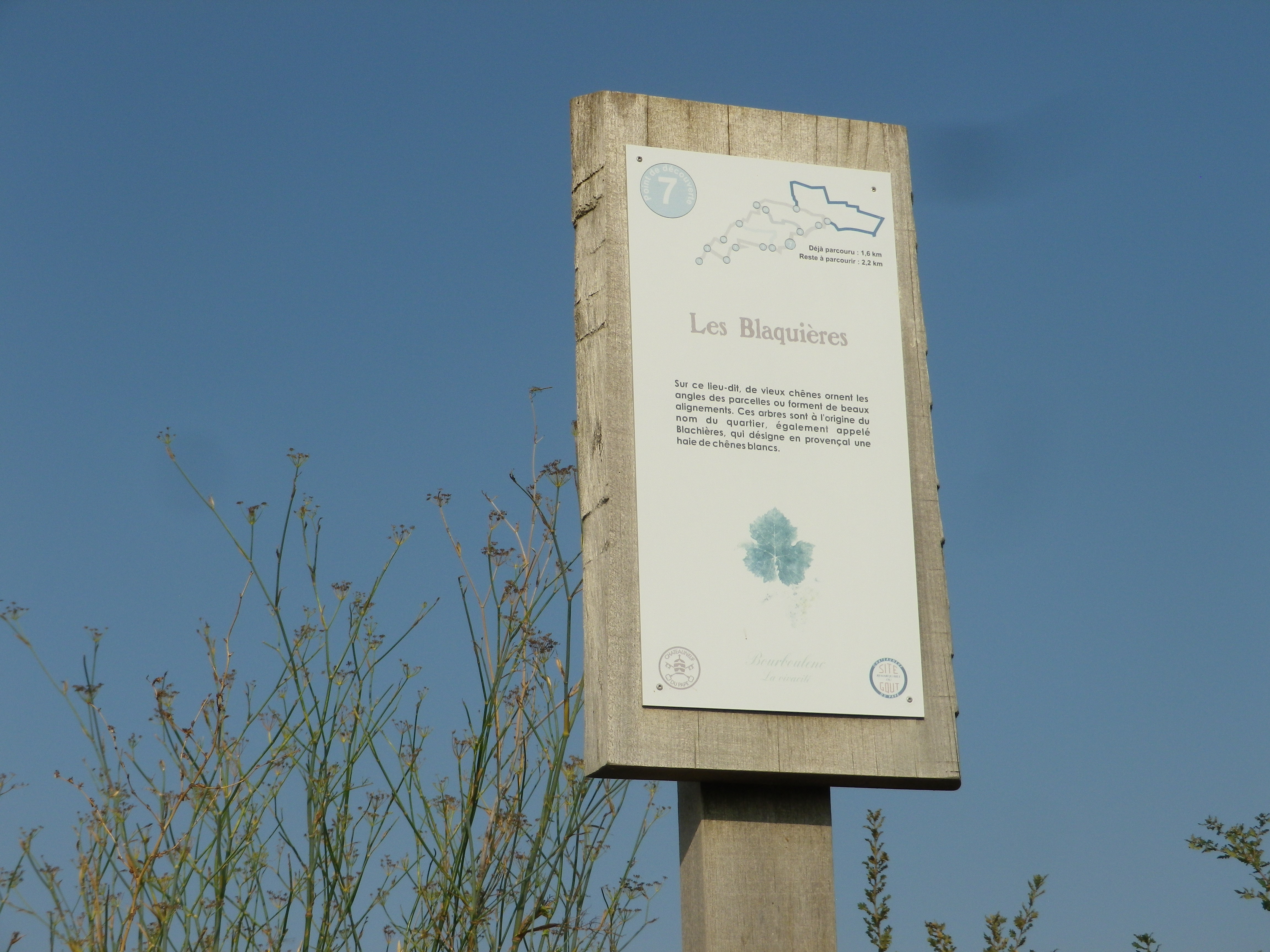
Trail Description:
A pleasant, but mostly unshaded, itinerary through parts of the famous vineyard area of Chateauneuf du Pape, providing great views, tips on local viticultural practices, and fun for the whole family (providing you wear sturdy footwear!).
Trailhead:
Chateauneuf du Pape: Avenue Louis Pasteur
Parking:
In the center of the village, not much, but there is more
Public Transportation Options:
Rail: None, but the closest stations are in Orange, Courthezon or Sorgues, all on the Orange to Avignon line. Check https://www.sncf.com/fr
Bus: Buses on the Route Orange-Sorgues, on Line 922
Suggested Stages:
Not applicable
Trail Itinerary-Reference Points:
Chateauneuf du Pape: Avenue Louis Pasteur-Chemin de la Font du Pape, to the first educative panel, through vineyards to Chemin de la Coste Froide, Chemin de la Montalivet (a narrow track), Chemin de la Nerthe, (turning onto a narrow track called Chemin Draille de la Crau, circling the vineyards of Charbonnieres Est, stair-stepping back west to Chemin de Charbonnieres, onto Route de Courthezon, then right onto a track to rejoin the original trail passing along a small wood, vineyards, then through woods back onto Chemin de la Montalivet; left onto Route de Courthezon/D92, following it back into the village
Representative Trail Photos:
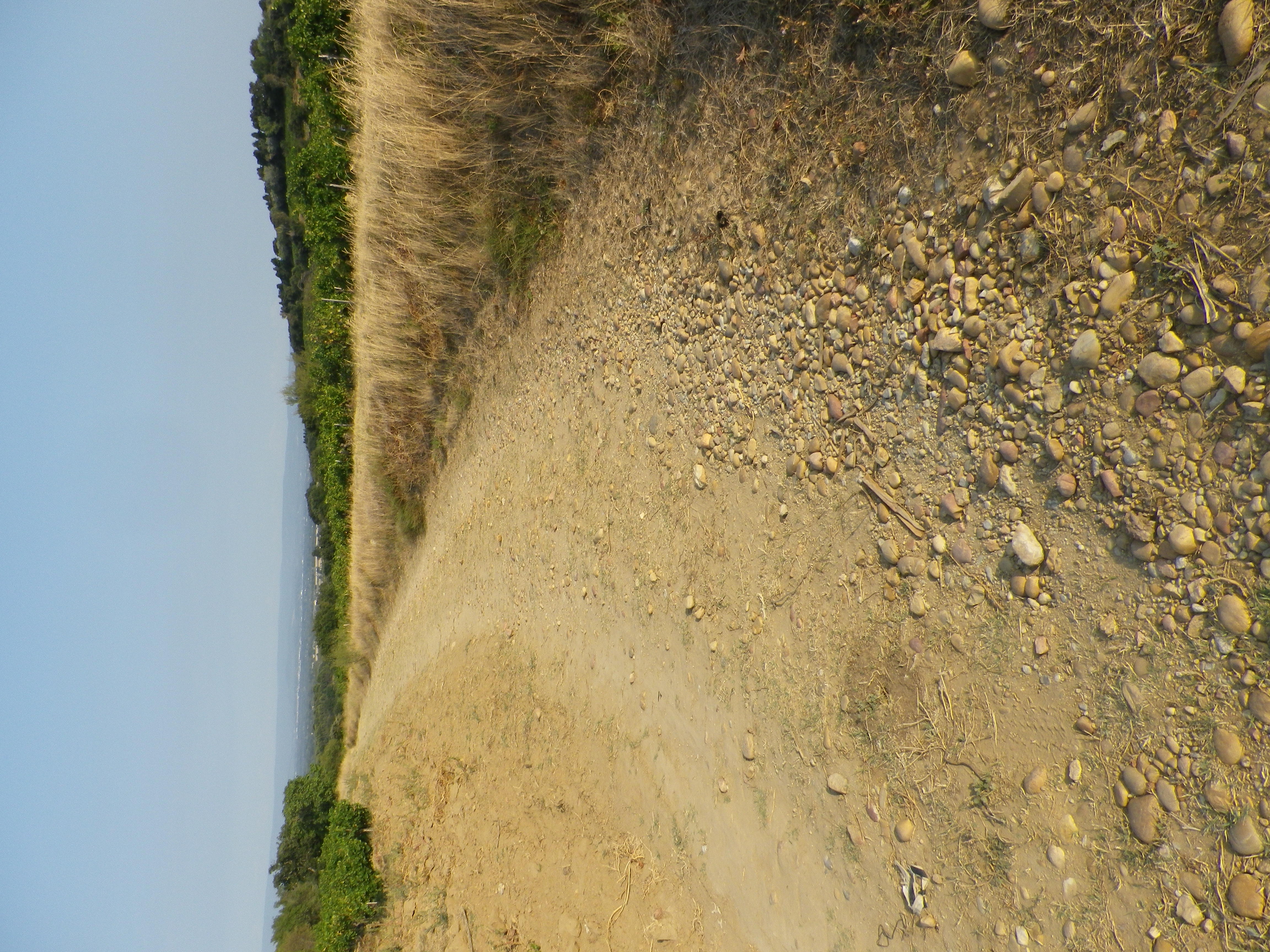
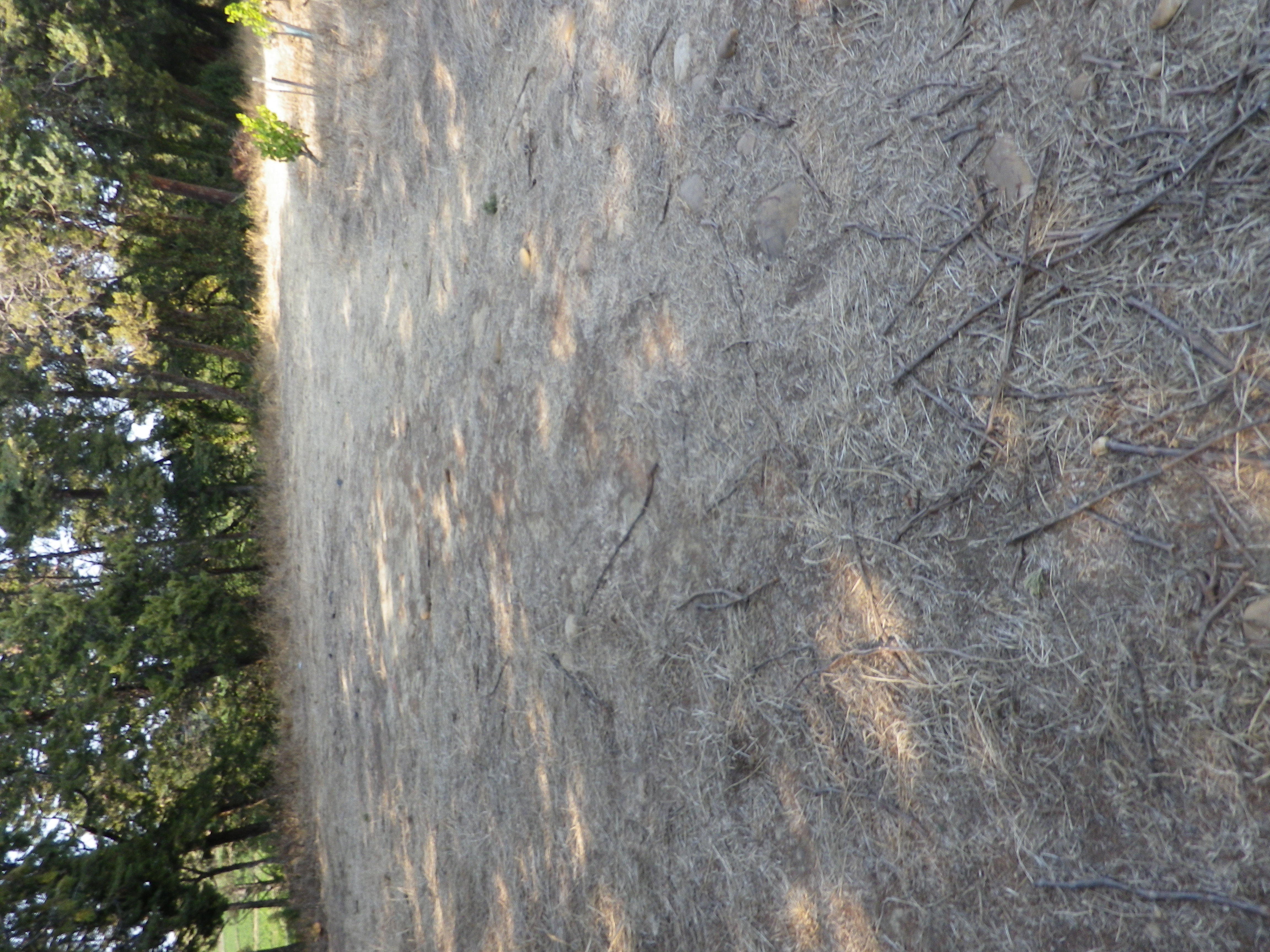
Restrooms:
None observed
Attractions on or near Trail:
Chateauneuf du Pape, Avenue Saint-Pierre de Luxembourg: Musee du Vin Brotte, offers audio-guided tours, and a wine tasting.
Tasting along the Trail:
Both in the village and along the trail there are plenty of wineries to choose from!
Alternative Options:
Hiking: Chateauneuf du Pape and its Environments is a 10.8 km circuit route that has more elevation, and covers a wider variety of scenery, from village to river, as well as through vineyards. See https://www.visorando.com/randonnee-chateauneuf-du-pape-et-son-environnement/
Biking: From the Antique Stones of Orange, to the Galets (River Stones) of Chateauneuf du Pape, a challenging 35 kilometer circuit, beginning in Orange, famous for its Roman theater and other ruins, to Chateauneuf du Pape, some of which follows the well-known Via Rhona bike trail (from Lyon). See https://www.provence-cycling.co.uk/equipment/orange/cycle-route-from-the-stone-to-the-pebbly-terroir/provence-713016-2.html
Additional Information:
Regional: https://www.france-voyage.com/cities-towns/chateauneuf-du-pape-33685/tourist-office-chateauneuf-pape-7166.htm ; and more specifically for this area https://www.poptourisme.fr/
Trail specific: https://www.outdooractive.com/en/route/hiking-route/france/sentier-viticole-chateauneuf-du-pape/266646253/
Comments:
This route leads past 15 numbered education boards about vineyards and winemaking, in order.
The trail is designed with short-cuts (shorter versions), or an extension (longer version) (at or near sign 10, ) to the Charbonnieres Est and the Crau vineyard areas, which adds about 2 km, (1.25 miles) to make it about 7.5 kilometers in total.
